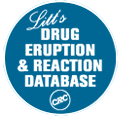- SCIENTIFIC NAMES: Symphytum asperum; Symphytum officinale; Symphytum peregrinum; Symphytum x uplandicum
- INDICATIONS: Leaf: Gastric and duodenal ulcer, rheumatic pain, gout, arthritis. Topical: poultice for bruises, sprains, athlete's foot, crural ulcers, mastitis, varicose ulcers. Root: Gastric and duodenal ulcers, hematemesis, colitis, diarrhea. Topical: ulcers, wounds, fractures, hernia.
- SYNONYM: Boraginaceae
- CLASS: Carminative
- HALF-LIFE: N/A
- CLINICALLY IMPORTANT, POTENTIALLY HAZARDOUS INTERACTIONS WITH:
Eucalyptus
The FDA warns that comfrey contains pyrrolizidine alkaloids that can cause cirrhosis and liver failure when taken orally in high doses.
Topical application is safer and more effective; allantoin in comfrey stimulates cell proliferation, accelerating wound healing.
Oral products containing comfrey are banned in the USA, UK, Australia, Canada and Germany.
Please login to view the rest of this drug profile.
Page last updated 07/31/2023




